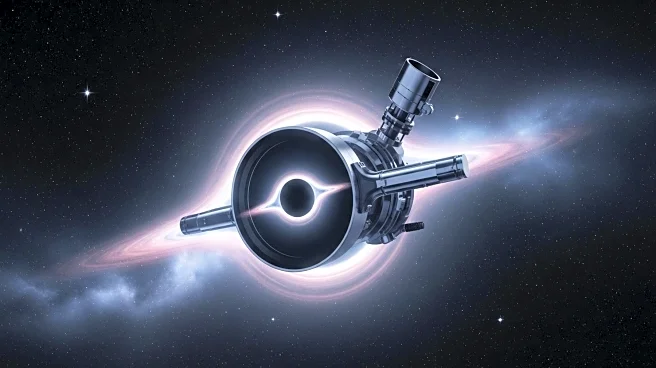What is the story about?
What's Happening?
Astronomers have discovered a pulsar named 'Calvera' fleeing a supernova in a sparsely populated region of the Milky Way. This pulsar, located around 6,500 light-years above the galactic plane, challenges existing theories about star formation in such regions. The discovery was made using the Low-Frequency Array radio telescope and further analyzed with data from the XMM-Newton spacecraft. The pulsar's trajectory suggests it is connected to the supernova remnant, offering new insights into stellar evolution.
Why It's Important?
The discovery of Calvera in a region where massive stars are rare could reshape our understanding of star formation and supernova occurrences. It suggests that extreme processes can occur even in low-density areas of the galaxy, potentially altering theories about gamma-ray emissions and stellar evolution. This finding is significant for astrophysics, as it may lead to revised models of the Milky Way's structure and the behavior of pulsars and supernova remnants.
What's Next?
Further research will likely focus on understanding the mechanisms behind Calvera's formation and its implications for star birth theories. Astronomers may conduct additional observations using various telescopes to gather more data on the pulsar and its surrounding environment. This could lead to new discoveries about the Milky Way's outer regions and the conditions that allow for such rare phenomena.
Beyond the Headlines
The discovery invites a reevaluation of the Milky Way's peripheries, encouraging astronomers to explore seemingly empty regions for hidden cosmic processes. It highlights the importance of using diverse observational tools to uncover the universe's secrets, potentially leading to breakthroughs in understanding cosmic evolution.
AI Generated Content
Do you find this article useful?















